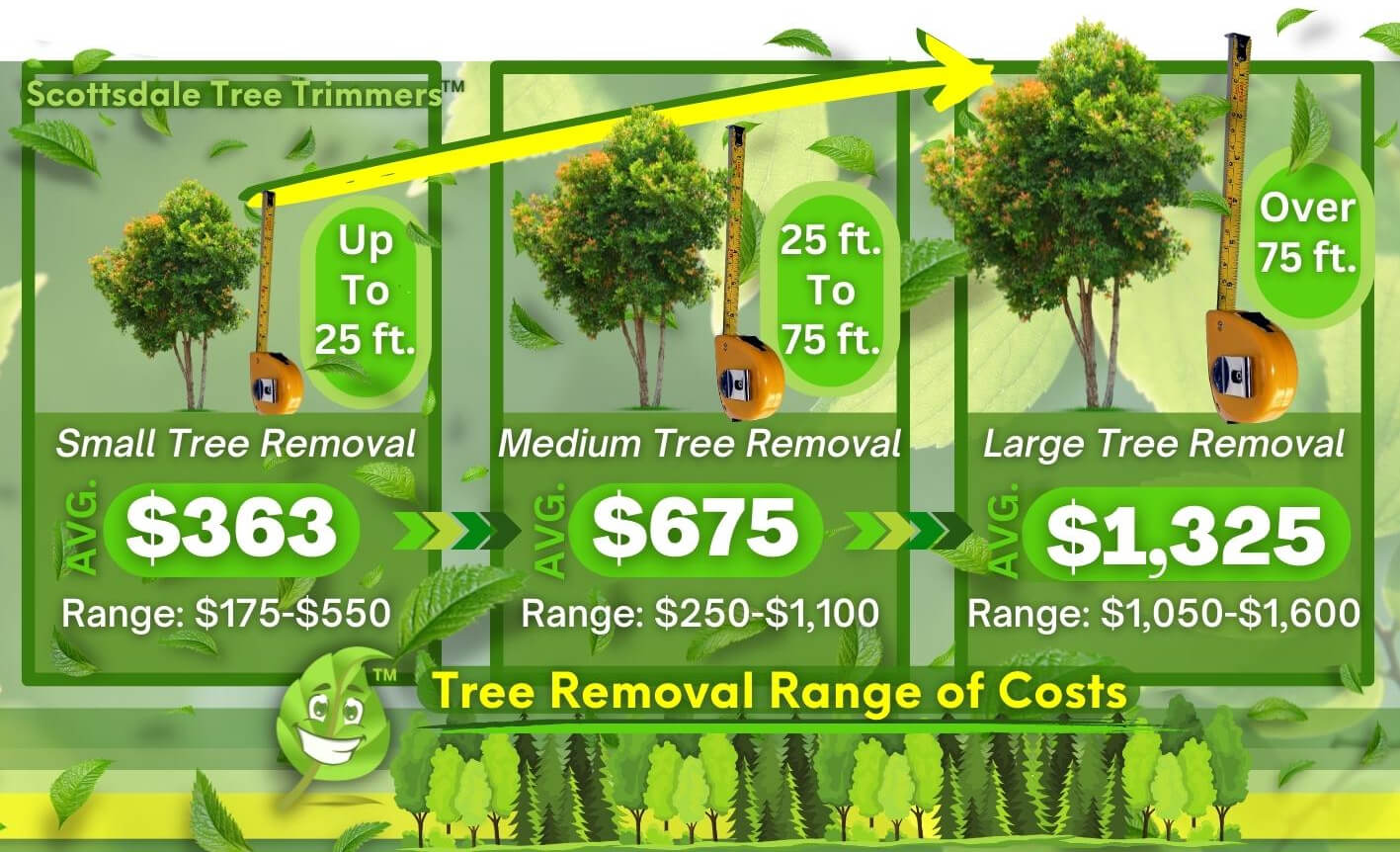Featured
Table of Contents
- – Liability Costs For Tree Trimming In Morris, IL
- – Local Pricing For Stump Removal In Morris, IL
- – Complete Guide To Tree Clearing Prices In Mor...
- – Morris, IL Tree Trimming Price Overview 2025
- – Small Tree Clearing Costs In Morris, IL
- – Morris, IL Stump Grinding Reviews And Pricing
- – Morris, IL Tree Clearing Maintenance Plans: C...
- – What Affects Tree Cutting Prices In Morris, IL
- – Understanding Tree Service Costs In Morris, IL
- – Morris, IL Tree Removal Case Studies: Costs
- – Morris, IL Tree Service Case Studies: Costs
- – What Should An Arborist Cost In Morris, IL
- – Budget Expectations For A Tree Removal In Mo...
- – Professional Tree Removal At Fair Prices In ...
- – Morris, IL Tree Cutting: Real Cost Breakdown

The subsections below offer more in-depth info about rates, consisting of a typical range for each. TypeAverage Removal CostPineConiferPalmMagnoliaArborvitaeAshCedarSweet GumEucalyptusSycamoreCypressOakMaplePoplar You can anticipate to pay in between to eliminate a pine, depending upon its size. Removing a pine is one of the more economical tasks unless it is one that has actually been around for many years and is quite large.
Liability Costs For Tree Trimming In Morris, IL
Pines also have a tap root that grows deep into the soil, which can prove to be more difficult to eliminate. The process itself includes an expert cutting the tree, clearing the base, cutting the surface area roots, eliminating the stump, and lastly treating the soil. Without an expert hand, you risk leaving pine seedlings behind, which will fall from the roots of distressed pines.
Local Pricing For Stump Removal In Morris, IL
The U.S. nationwide average for conifer elimination is approximately to have the conifer lowered, transported away, and the stump ground or removed totally. Conifers are usually easier to get rid of, and despite the fact that they can grow rather high, they do not cost a fortune to get rid of. Conifers include pine, spruce, fir, and juniper trees.
Complete Guide To Tree Clearing Prices In Morris, IL
While conifers are lovely, they kill native plants and certain types of grass (tree cutting). The average price of palm elimination depends on the height as much as the type, varying from.
Morris, IL Tree Trimming Price Overview 2025
That is why it is essential to know which type you are getting rid of. While you do not require an herbicide to kill a palm tree, there are some steps your removal expert will need to take to ensure the job is done properly. There are two methods they can eliminate them: by chopping them down or digging them up.
Small Tree Clearing Costs In Morris, IL
From there, they get rid of the real tree and then the stump. Expect to pay between to remove this type of tree, depending on the specific size and information of the task.
Morris, IL Stump Grinding Reviews And Pricing
There are three types: green, white, and black ash. White ash is understood for its many colors. With its gray-tinged bark, its leaves are green or purple in the spring and golden yellow or purplish-red in the fall. They enjoy moderate environments and lots of sun. The green ash is called such due to its green or yellow foliage.
Morris, IL Tree Clearing Maintenance Plans: Costs

The bark is softer, and it blooms later on in the year - tree trimming. Due to the variation in height, the elimination cost variation is large from. A coniferous, evergreen tree, the cedar is a durable species. True cedars enjoy higher altitudes, generally in the Mountain ranges and the Mediterranean. A real cedar can grow as high as 160 feet in height and is frequently planted in the United States as a landscape alternative.
What Affects Tree Cutting Prices In Morris, IL
The growth of incorrect cedars differs from 50 feet as much as 230 feet high. House owners may pay anywhere from, depending on the roots. With star-shaped leaves and spectacular fall colors, the sweet gum is considered a medium to big tree. Delighting in full sun, the sweet gum can not tolerate contamination.
Understanding Tree Service Costs In Morris, IL
Usually, it costs between to get rid of a eucalyptus. Eucalyptus are not typical all over, however they are rather big compared to others, which is why even the smaller ones are so expensive to remove.
Morris, IL Tree Removal Case Studies: Costs
There are a handful of ways to do this, consisting of burning, pulling, grinding, or eliminating them with herbicide. Expect to pay in between to remove sycamores, based on the height, trunk size, and amount of work included. Sycamores are among the biggest wood trees, typically varying from 60 to 100 feet high and as wide as 15 feet.
Morris, IL Tree Service Case Studies: Costs
The first two actions will expose the insides of the tree and cut off the flow of nutrients up the trunk. From there, an expert uses herbicide to eliminate the tree and lower the trunk. Then, they will eliminate the stump. Otherwise, brand-new sprouts might grow from it. Lowering and eliminating a mature cypress might cost as much as.
What Should An Arborist Cost In Morris, IL
There are several types of Cypress trees, however the most common are the Leyland, Arizona, Bald, and Italian. The Bald Cypress grows in swampy or really damp areas while the others enjoy a dry, warm, or hot environment (tree service). They can grow as tall as 80 to 100 feet tall
Budget Expectations For A Tree Removal In Morris, IL

Prone to diseases, the Cypress is among the most valued woods for furnishings. The typical oak grows to around 60 feet, and depending on the complexity of the elimination, it costs approximately to get rid of. The specific size of your oak and the effort required to fell it affect what you will really spend for elimination in addition to any additional services like stump grinding.
Professional Tree Removal At Fair Prices In Morris, IL
Access to the trees and the roots will also affect the general cost. Maples are usually amongst the more expensive trees to remove due to the fact that of their size and the work involved in the elimination.
Morris, IL Tree Cutting: Real Cost Breakdown
Poplars are giants of the types. Growing as high as 90 to 115 feet, these enormous timbers are mainly found in North America and include the aspen, cottonwood, and balsam trees. Boasting an expansive root system, poplars can be expensive to eliminate when fully grown. The process to remove trees involves all the cutting and cutting of the branches and trunk, bringing it down to a stump.
Table of Contents
- – Liability Costs For Tree Trimming In Morris, IL
- – Local Pricing For Stump Removal In Morris, IL
- – Complete Guide To Tree Clearing Prices In Mor...
- – Morris, IL Tree Trimming Price Overview 2025
- – Small Tree Clearing Costs In Morris, IL
- – Morris, IL Stump Grinding Reviews And Pricing
- – Morris, IL Tree Clearing Maintenance Plans: C...
- – What Affects Tree Cutting Prices In Morris, IL
- – Understanding Tree Service Costs In Morris, IL
- – Morris, IL Tree Removal Case Studies: Costs
- – Morris, IL Tree Service Case Studies: Costs
- – What Should An Arborist Cost In Morris, IL
- – Budget Expectations For A Tree Removal In Mo...
- – Professional Tree Removal At Fair Prices In ...
- – Morris, IL Tree Cutting: Real Cost Breakdown
Latest Posts
Addison, TX Tree Clearing Cost Insights
Quick Tree Trimming Service Costs In Kennett, MO
Negotiating Tree Removal Prices In Maryland Heights, MO
More
Latest Posts
Addison, TX Tree Clearing Cost Insights
Quick Tree Trimming Service Costs In Kennett, MO
Negotiating Tree Removal Prices In Maryland Heights, MO